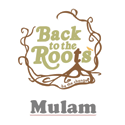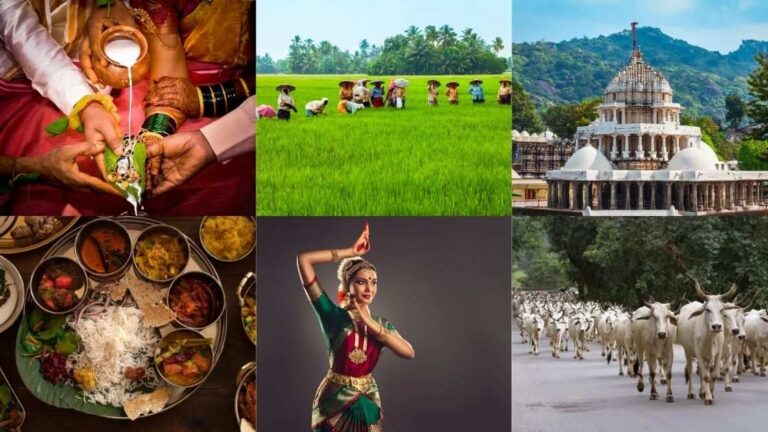Indian Customs and Traditions
India is a diverse and culturally rich country with a wide range of customs and traditions that vary from region to region. These customs and traditions have been shaped by India’s long and complex history, which includes influences from various religions, invasions, and migrations. Here are some of the most significant customs and traditions in India:
- Religion: India is the birthplace of several major religions, including Hinduism, Buddhism, Jainism, and Sikhism. The majority of Indians are Hindus, and religious practices and rituals play a significant role in daily life. Other religions, such as Islam, Christianity, and Zoroastrianism, also have significant followings.
- Family and Social Structure: Family is considered the most important social unit in India. Extended families often live together and provide a strong support system. Respect for elders is a fundamental value, and multi-generational households are common.
- Marriage: Arranged marriages are still prevalent in India, where families play a key role in selecting suitable partners. Weddings are grand affairs with numerous rituals and traditions, often varying by region.
- Festivals: India is known for its diverse and colorful festivals. Diwali, Holi, Eid, Christmas, and many others are celebrated with great enthusiasm. Festivals often involve special foods, rituals, and traditional clothing.
- Clothing: Traditional Indian clothing varies by region but often includes items like sarees for women and dhotis or kurta-pajamas for men. Traditional clothing is often worn during special occasions and festivals.
- Cuisine: Indian cuisine is diverse and known for its use of spices and flavors. Different regions have their own culinary traditions. Common ingredients include rice, wheat, lentils, and a variety of vegetables and spices.
- Gestures and Etiquette: Indians often use the traditional “Namaste” greeting, with palms pressed together in a prayer-like gesture. Removing one’s shoes before entering a home or temple is a common practice. It is also customary to offer and receive gifts with both hands.
- Language: India is a linguistically diverse country with numerous languages and dialects spoken across the country. Hindi and English are the official languages, but each state has its own official language as well.
- Art and Music: India has a rich tradition of classical music (Hindustani and Carnatic), dance (Bharatanatyam, Kathak, etc.), and various forms of art (painting, sculpture, and more). These art forms often have religious or cultural significance.
- Yoga and Ayurveda: Yoga, an ancient practice for physical and mental well-being, originated in India. Ayurveda is an ancient system of medicine that focuses on holistic healing using natural remedies and lifestyle practices.
- Holidays and Observances: India observes national holidays such as Republic Day, Independence Day, and Gandhi Jayanti. Each state may have its own regional holidays as well.
- Religious Pilgrimages: India is home to numerous sacred sites, and religious pilgrimages are common. Places like Varanasi, Amritsar, and Haridwar are popular pilgrimage destinations.
- Cultural Diversity: India’s cultural traditions vary greatly from the north to the south and from the east to the west. Each region has its unique customs, festivals, and traditions.
- Caste System: The caste system has been a significant social and cultural aspect of India for centuries. Although it has been officially abolished and is considered illegal, it still has an impact on many aspects of Indian society, particularly in rural areas.
- Tolerance and Pluralism: India is known for its cultural and religious diversity, and it has a long history of religious tolerance. Multiple religions and sects coexist, and religious freedom is protected by the Indian constitution.
- Diverse Wedding Rituals: Indian weddings are known for their elaborate rituals. Hindu weddings, for example, involve ceremonies like Haldi (turmeric application), Mehendi (henna application), and the seven steps around the sacred fire. Muslim weddings, on the other hand, include the Nikah ceremony.
- Colorful Festivals: India’s festivals are vibrant and colorful. During Holi, people play with colored powders and water. In states like Rajasthan, the festival of Teej is celebrated with traditional dances and songs.
- Kumbh Mela: The Kumbh Mela is a massive religious pilgrimage in which Hindus gather to bathe in the holy rivers, believing it will cleanse them of sin. It is one of the largest gatherings of people on Earth and takes place every 12 years at four different locations in India.
- Traditional Arts and Crafts: India is known for its handicrafts and art forms. Each region has its own specialties, from intricate embroidery in Lucknow to Pashmina shawls in Kashmir.
- Greeting Customs: Greeting customs can vary by region. In some places, a simple nod of the head is considered a polite greeting, while in other regions, people may hug or touch feet as a sign of respect.
- Street Food: India is famous for its street food culture. You can find a wide variety of street snacks like chaat, samosas, vada pav, and more, which are often delicious and inexpensive.
- Monuments and Architecture: India boasts a rich architectural heritage, with iconic structures such as the Taj Mahal, Jaipur’s palaces, and ancient temples. Many of these architectural marvels are UNESCO World Heritage Sites.
- Respect for Nature: Many customs and traditions in India emphasize a connection with nature. For example, many rivers, animals, and plants are considered sacred, and harming them is discouraged.
- Fasting and Religious Observances: Fasting is common among people of various religious traditions in India. It is often associated with specific religious observances and festivals.
- Storytelling and Mythology: Indian culture places a significant emphasis on storytelling, with rich mythological and epic traditions. The Ramayana and Mahabharata are among the most famous Indian epics.
- Gender Roles: Gender roles can vary in India, with traditional expectations often placing men and women in distinct roles. However, these roles are evolving, especially in urban areas.
- Rituals for the Deceased: Different religions in India have their own rituals and customs for honoring and mourning the deceased. For example, Hindus often cremate their dead, while Muslims bury them.
- Community and Neighborly Relations: Indians often have strong community and neighborly relations. People celebrate important life events together, and festivals are often occasions for communal celebrations.
It’s important to remember that customs and traditions in India are highly diverse and can vary significantly from one region to another, and even from one community to another within the same region. This diversity is one of the most fascinating aspects of Indian culture.
Related Link
Content Specific Keywords:#incredibleindia#indianwedding#mumbai#art#saree#indianfashion#fashion#indiantradition#bappa#indianhistory#delhi#traditional#indianwear#indianfood#krishna#ganpati#wedding#shiva#morya#indiafarming


